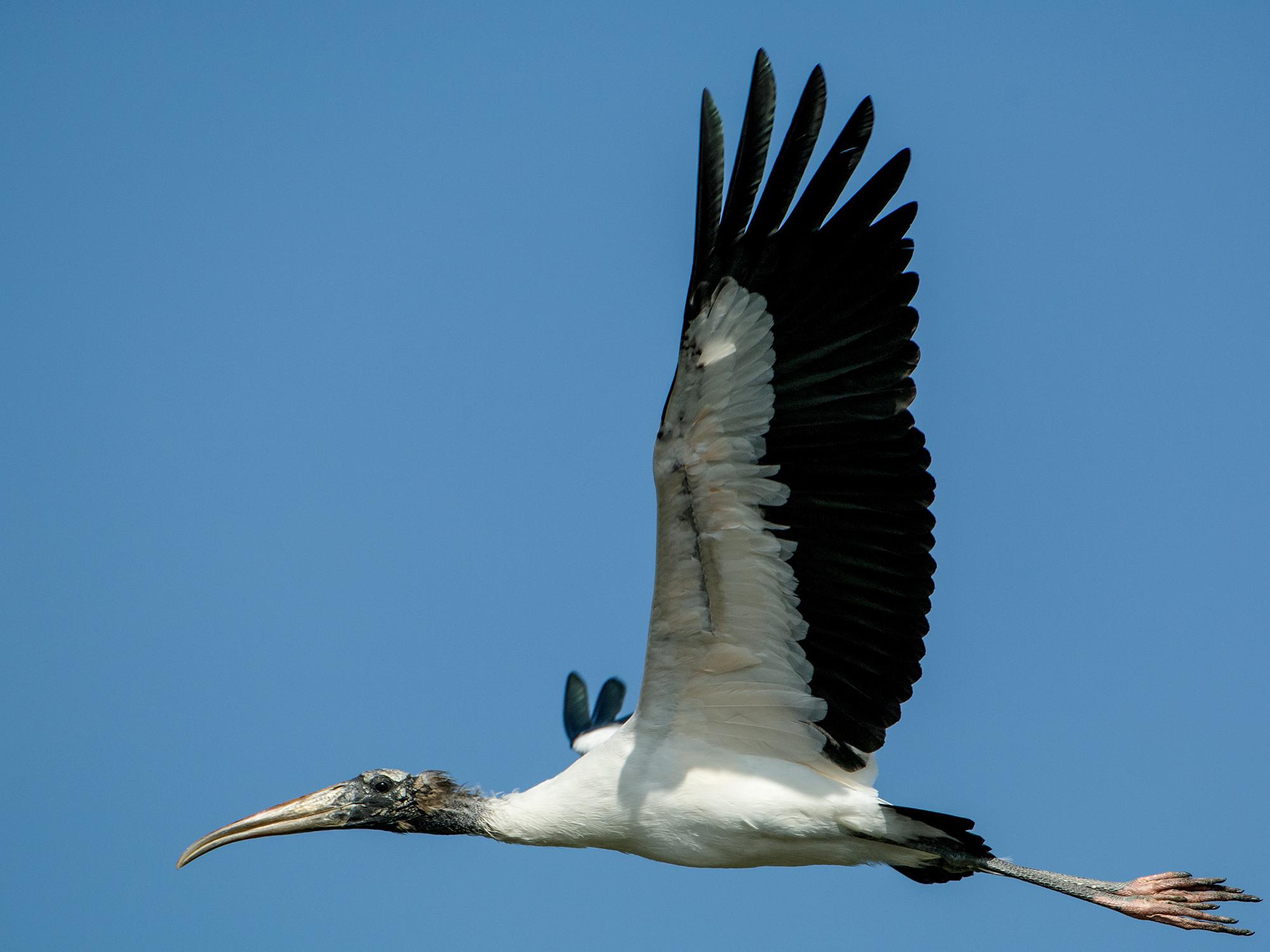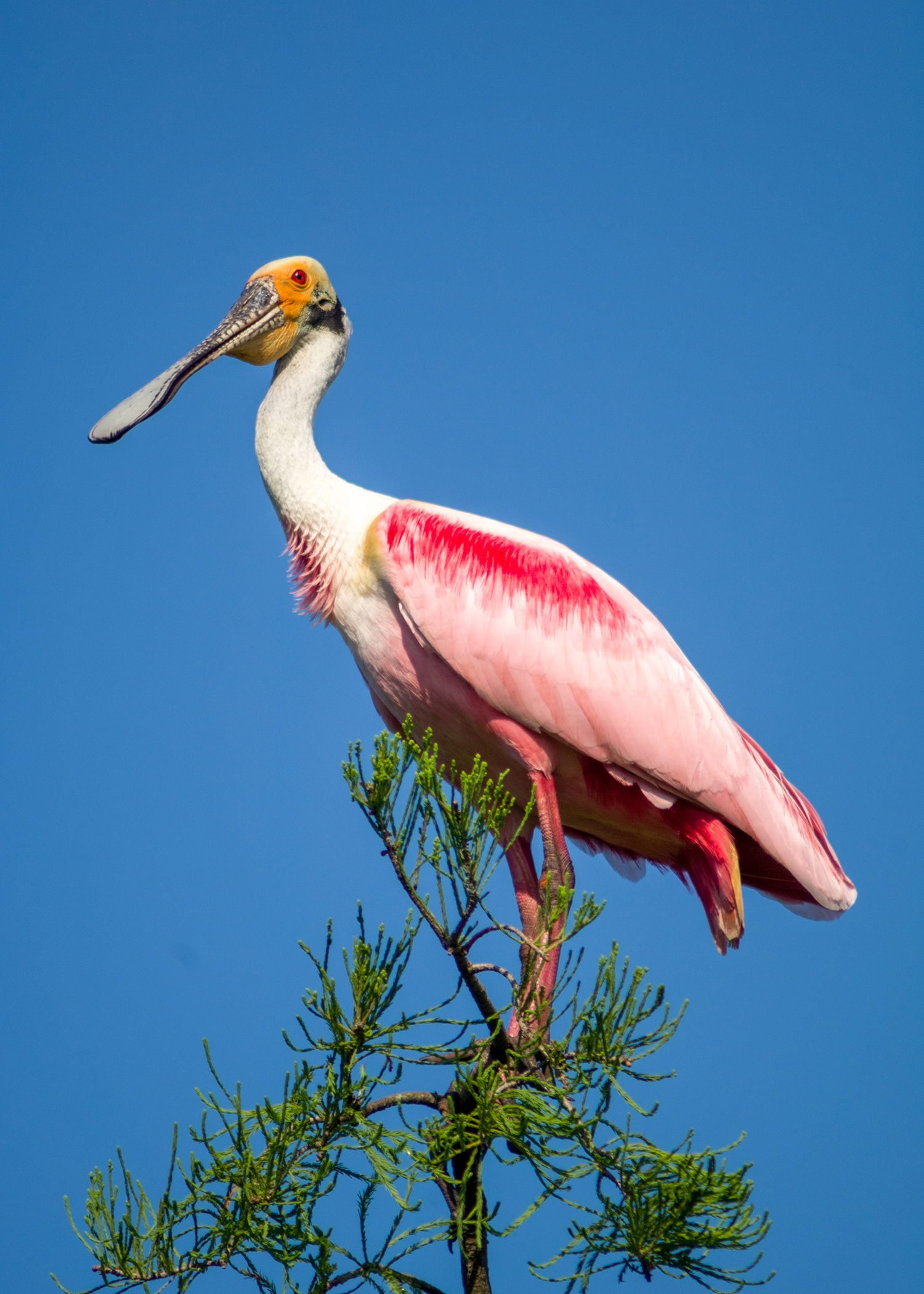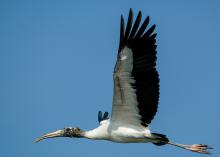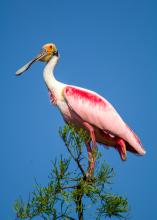Information Possibly Outdated
The information presented on this page was originally released on August 5, 2016. It may not be outdated, but please search our site for more current information. If you plan to quote or reference this information in a publication, please check with the Extension specialist or author before proceeding.
Hot weather brings colorful bird visitors
RAYMOND, Miss. -- The hottest days of the summer may drive many people indoors to the air conditioning, but bird-watchers know it is a great time to go outside to see some of Mississippi’s most colorful visitors.
Even with all its heat and humidity, August can provide surprisingly unique opportunities to watch late-summer visitors like the Roseate spoonbill and the Wood stork.
Adult Roseate spoonbills are pink birds with vertical streaks of dark-red on their wings, breast and belly with red legs. The white upperparts and neck contrast boldly with their bald greenish-orange heads that lead to the long gray spoon-shaped bills. Spoonbills probe the shallow waters swishing their bills from side to side, filtering out small crustaceans and other invertebrates.
Although not as flashy as spoonbills, Wood storks are beautiful in their own right with snowy-white bodies and dark-black wings. This solemn-looking bird, with its bowed head, stands nearly 4 feet tall with a wingspan of 5 1/2 feet. A dark-gray, bald head leads to a long bill that is used to probe for fish in shallow waters. In flight, the Wood stork fully extends its neck and legs as it slowly and powerfully pumps its black wings.
These birds commonly associate with other wading birds like ibises, herons and egrets, so make sure to slowly scan these groups of birds with binoculars for spoonbills and wood storks mixed in. These birds can be seen roosting in hardwood sloughs, barrow pits along levees and shallow water areas along the Gulf Coast and the Delta.
Several of our National Wildlife Refuges, such as St. Catherine’s Creek south of Natchez, Panther Swamp west of Yazoo City, Sam D. Hamilton Noxubee Refuge south of Starkville, and Lefleur’s State Park in Jackson are known locations where these birds can be viewed. Be aware that these refuges have small daily entrance fees or the option of buying annual passes. Also, these birds move frequently as their food sources diminish, so contact these locations to inquire about daily sightings before making the trip.
Another ideal way to view these birds is to drive along the Coast and Delta looking for shallow water areas, sloughs and cypress swamps associated with river systems like the Big Black, Yazoo and Pearl. Enjoy the views, but make sure to avoid trespassing on private property.
Those willing to endure the heat and put in the time to travel will no doubt be rewarded by views of these remarkable birds.

Editor’s Note: Extension Outdoors is a column authored by several different experts in the Mississippi State University Extension Service.










